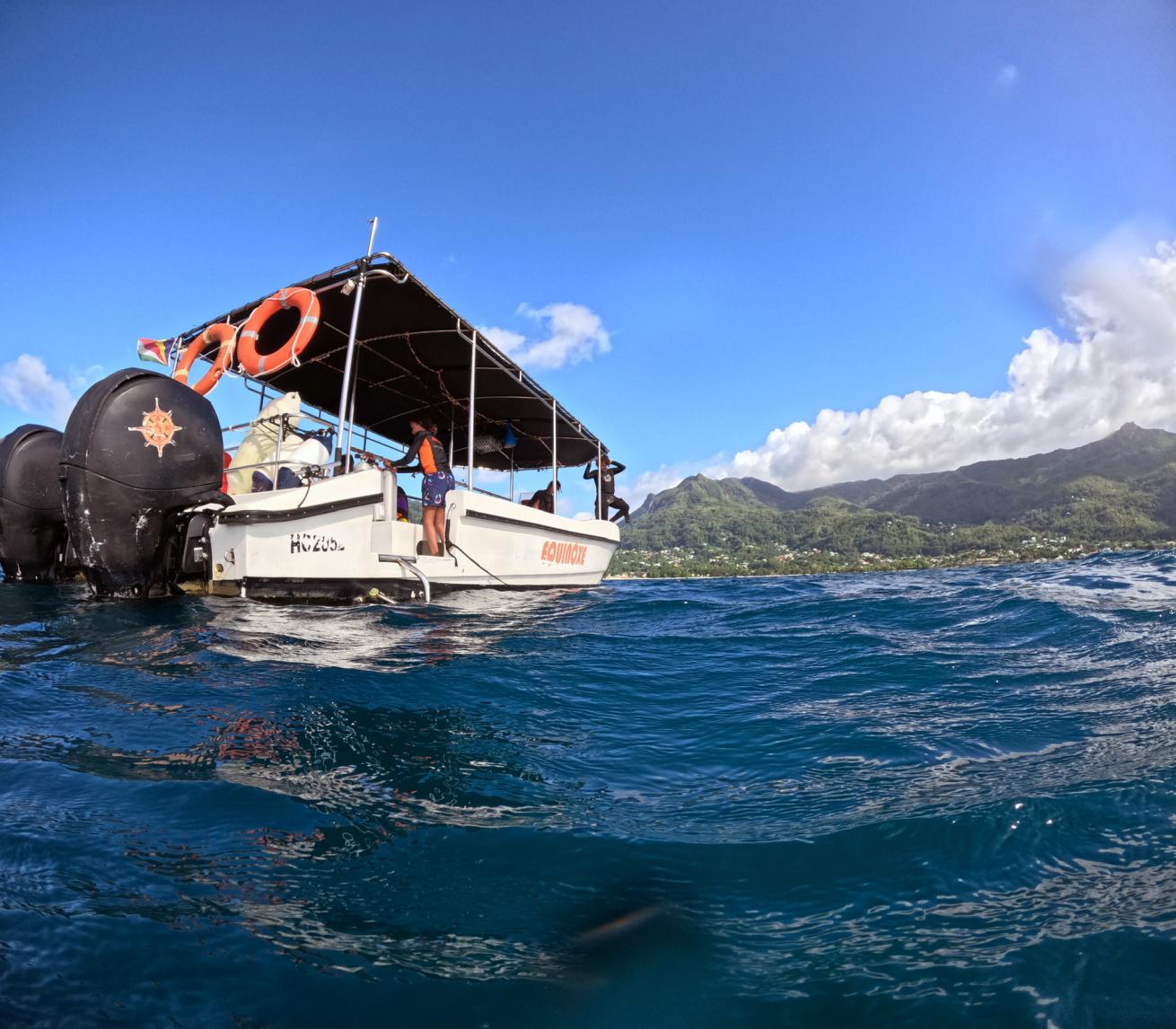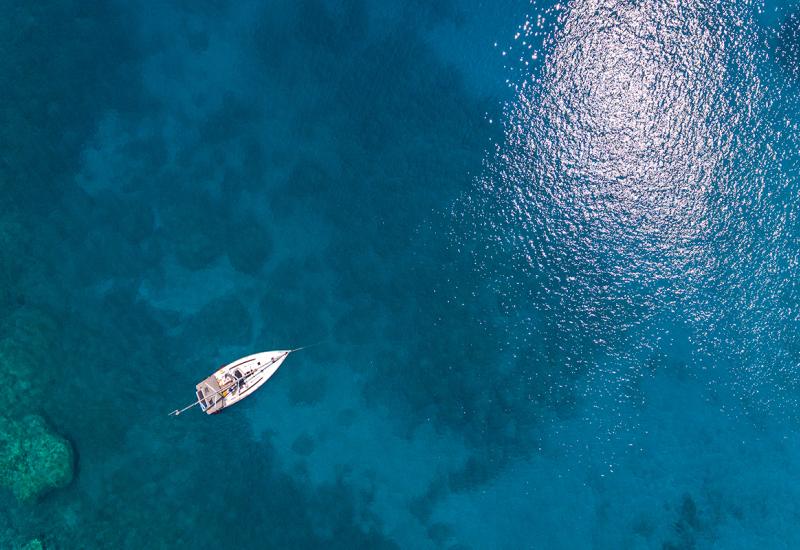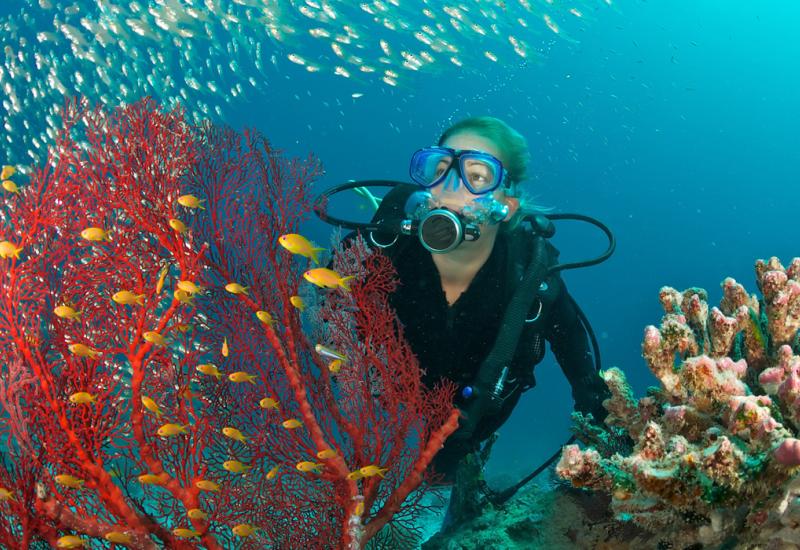Diving Paradise: A Guide to Scuba Diving in the Seychelles

Shutterstock.com/proslgn_shutterstockSeychelles provides stunning views above and below the ocean
An archipelago of 115 islands off the coast of West Africa, the Seychelles is a paradise like no other, usually frequented by honeymooners but accessible to everyone. The Seychelles is a bucket list destination on many scuba divers’ lists thanks to its transparent waters, rare species and unusual underwater topography, where vast house reefs lie off every beach and whale sharks come in their droves to feed. The main islands in the Seychelles are Mahé, Praslin and La Digue, each with its own great sets of dive schools, house reefs, long-distance sites, shipwrecks and drift dives for all types of divers.

India-Jayne TrainorView from the Equinoxe Diver's boat off Beau Vallon Beach, Mahe
Mahé
Mahé is the largest Seychelles island and where you’ll fly into. Most of the dive schools here are concentrated in Beau Vallon, a golden beach on the northwest coast, which offers the perfect spot for both short trips to popular dive sites and longer rides south or around the northern tip of the island, which is only accessible by boat, to areas like Baie Ternay Marine Park.
L’ilot
L’ilot is an island around half a kilometre away from Mahe, easily accessed from Beau Vallon and ideal for both beginner and advanced divers. It’s a tiny island made of granite, with a few palm trees peeking out, that you can dive the circumference of in one go. The boulders and rocks that form the island make up underwater arches and swim-throughs, and commonly seen species include turtles and dolphins; however, it’s particularly well known for whale sharks, the season for which is from September to November.
Related Reading: Jumping Into Jamaica: A Scuba Diver’s Guide to Paradise

India-Jayne TrainorView over jungles and hills near Anse de la Mouche
The Ennerdale
The Ennerdale is the Seychelles’ most famous wreck, located northeast of Mahé at around 30 meters below the surface. An oil tanker more than 200m long, the Ennerdale is reserved for advanced divers who can explore its scattered parts, which were blown up after an oil spill in 1970. Visitors can see species like eagle rays and groupers, which soar overhead, along with the spectacular coral that now grows on the ship. Low visibility can be an issue, so aim to go in the dry season from May - October.

India-Jayne TrainorCoral reef at The Aquarium, short distance beginners dive site off Beau Vallon
Praslin & La Digue
Praslin and La Digue are the Seychelles’ two other major islands - quieter, more remote and if possible, more beautiful than Mahé. If you’re lucky enough to stay on either, you’ll have access to more than 17 dive sites and multiple schools dotted across the islands.

India-Jayne TrainorAnse Takamaka (Takamaka Beach), Mahe
South Marianne Island
South Marianne Island is the most famous and stunning dive site reachable from Praslin or La Digue. It’s known for its unique topography featuring caves, boulders and pinnacles and is home to a wealth of pelagics, particularly multiple shark species. Currents are strong and drift diving is popular, so South Marianne is best for advanced divers. Look out for eagle rays, reef sharks, Hawksbill turtles, guitarfish and giant moray eels.
Related Reading: An Adventurer's Guide to Diving Malaysia’s Perhentian Islands
Whale Rock
As the name suggests, Whale Rock is a popular site for seeing whale sharks in season. However, eels, turtles, lionfish, eagle rays and various species of reef sharks can also be found year-round. The average depth of between 15-25 meters makes it ideal for intermediate and advanced divers, as do the epic underwater rock formations, granite boulders and swim-through passageways, which can reach up to 10 meters long. Thanks to the clear skies and bright moonlight, Whale Rock also makes for a fun night dive when different species come out to play.
Bonus Dive: Aldabra
A UNESCO World Heritage Site a few days’ journey from Mahé, Aldabra can’t missed off a Seychelles dive list, no matter how tricky it is to reach. The atoll is the largest raised reef in the world, made up of four islands that form a circle, where more than 150,000 giant tortoises live. Under the waves, world-class dive sites feature reef drop-offs, caves, lagoons, canyons and channels. There are roughly 3,000 fish per 100sq/m, including sharks, turtles, eagle rays, dugongs and the world's largest population of coconut crabs. Trips must be pre-approved, meaning liveaboards or private tours are the only way to get here.
Top Side
Beach Hopping - Mahe is the largest island, yet you can drive around it in a few hours. I recommend renting a car and driving the West Coast Road, stopping at beaches such as Anse Royale, Anse Takamaka and Anse Soleil. On La Digue, Anse Source D'Argent is the most photographed beach in the world, but Anse Cocos is equally stunning, and on Praslin, Anse Boudin is best for low-hanging palm trees and fewer crowds.
Outdoor Adventures - Morne Seychellois National Park takes up most of Mahé and is a misty, jungle-covered park home to the island’s highest peaks, Hiking here can be extremely rewarding if you’re after incredible views - the best trails include the Copolia Trail, Three Brothers Trail and the Morne Blanc trail, which reaches the highest point on the island.
Creole Cuisine - The Seychelles’ cuisine draws on African and South Asian influences, so delicious seafood and curries are common. In the Seychelles’ capital of Victoria, head to Marie Antoinette, one of the island’s most famous restaurants, for home-cooked local cuisine or Surfer’s Beach Restaurant in Takamaka. Praslin has fewer options, but Le Dauphin and Café des Arts both cook up a feast - otherwise, roadside stalls and vans serve tasty, traditional meals at low prices.
Need to Know
When to Visit - Although you can dive year-round in the Seychelles, the best months are April, May, October and November. September to November is whale shark season when plankton is drawn to the islands, while December to March is generally monsoon season, which can affect visibility.
Getting There and Around - Flights from most major cities go to Dubai, from where it’s a short, 4-hour flight to Mahé. Praslin and La Digue can be reached by ferry, with prices starting at around £60 one way. Alternatively, you can fly straight on from Mahé to Praslin on a tiny, domestic flight that takes just 10 minutes but must be booked in advance. La Digue is small enough to cycle around, but on Praslin and Mahé particularly, consider renting a car as, despite their size, the terrain is vast and mountainous and taxis are generally expensive.










